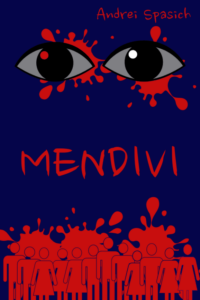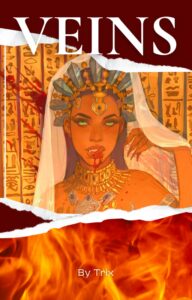Dim face of Beauty haunting all the world,
Fair face of Beauty all too fair to see,
Where the lost stars adown the heavens are hurled,—
There, there alone for thee
May white peace be.
Beauty, sad face of Beauty, Mystery, Wonder,
What are these dreams to foolish babbling men
Who cry with little noises ’neath the thunder
Of Ages ground to sand,
To a little sand.
FIONA MACLEOD.

It was out in the country, far from home, far from my foster home, on a dark Sunday night. The road wandered from our rambling log-house up the stony bed of a creek, past wheat and corn, until we could hear dimly across the fields a rhythmic cadence of song,—soft, thrilling, powerful, that swelled and died sorrowfully in our ears. I was a country schoolteacher then, fresh from the East, and had never seen a Southern Negro revival. To be sure, we in Berkshire were not perhaps as stiff and formal as they in Suffolk of olden time; yet we were very quiet and subdued, and I know not what would have happened those clear Sabbath mornings had some one punctuated the sermon with a wild scream, or interrupted the long prayer with a loud Amen! And so most striking to me, as I approached the village and the little plain church perched aloft, was the air of intense excitement that possessed that mass of black folk. A sort of suppressed terror hung in the air and seemed to seize us,—a pythian madness, a demoniac possession, that lent terrible reality to song and word. The black and massive form of the preacher swayed and quivered as the words crowded to his lips and flew at us in singular eloquence. The people moaned and fluttered, and then the gaunt-cheeked brown woman beside me suddenly leaped straight into the air and shrieked like a lost soul, while round about came wail and groan and outcry, and a scene of human passion such as I had never conceived before.
Those who have not thus witnessed the frenzy of a Negro revival in the untouched backwoods of the South can but dimly realize the religious feeling of the slave; as described, such scenes appear grotesque and funny, but as seen they are awful. Three things characterized this religion of the slave,—the Preacher, the Music, and the Frenzy. The Preacher is the most unique personality developed by the Negro on American soil. A leader, a politician, an orator, a “boss,” an intriguer, an idealist,—all these he is, and ever, too, the centre of a group of men, now twenty, now a thousand in number. The combination of a certain adroitness with deep-seated earnestness, of tact with consummate ability, gave him his preeminence, and helps him maintain it. The type, of course, varies according to time and place, from the West Indies in the sixteenth century to New England in the nineteenth, and from the Mississippi bottoms to cities like New Orleans or New York.
The Music of Negro religion is that plaintive rhythmic melody, with its touching minor cadences, which, despite caricature and defilement, still remains the most original and beautiful expression of human life and longing yet born on American soil. Sprung from the African forests, where its counterpart can still be heard, it was adapted, changed, and intensified by the tragic soul-life of the slave, until, under the stress of law and whip, it became the one true expression of a people’s sorrow, despair, and hope.
Finally the Frenzy of “Shouting,” when the Spirit of the Lord passed by, and, seizing the devotee, made him mad with supernatural joy, was the last essential of Negro religion and the one more devoutly believed in than all the rest. It varied in expression from the silent rapt countenance or the low murmur and moan to the mad abandon of physical fervor,—the stamping, shrieking, and shouting, the rushing to and fro and wild waving of arms, the weeping and laughing, the vision and the trance. All this is nothing new in the world, but old as religion, as Delphi and Endor. And so firm a hold did it have on the Negro, that many generations firmly believed that without this visible manifestation of the God there could be no true communion with the Invisible.
These were the characteristics of Negro religious life as developed up to the time of Emancipation. Since under the peculiar circumstances of the black man’s environment they were the one expression of his higher life, they are of deep interest to the student of his development, both socially and psychologically. Numerous are the attractive lines of inquiry that here group themselves. What did slavery mean to the African savage? What was his attitude toward the World and Life? What seemed to him good and evil,—God and Devil? Whither went his longings and strivings, and wherefore were his heart-burnings and disappointments? Answers to such questions can come only from a study of Negro religion as a development, through its gradual changes from the heathenism of the Gold Coast to the institutional Negro church of Chicago.
Moreover, the religious growth of millions of men, even though they be slaves, cannot be without potent influence upon their contemporaries. The Methodists and Baptists of America owe much of their condition to the silent but potent influence of their millions of Negro converts. Especially is this noticeable in the South, where theology and religious philosophy are on this account a long way behind the North, and where the religion of the poor whites is a plain copy of Negro thought and methods. The mass of “gospel” hymns which has swept through American churches and well-nigh ruined our sense of song consists largely of debased imitations of Negro melodies made by ears that caught the jingle but not the music, the body but not the soul, of the Jubilee songs. It is thus clear that the study of Negro religion is not only a vital part of the history of the Negro in America, but no uninteresting part of American history.
The Negro church of to-day is the social centre of Negro life in the United States, and the most characteristic expression of African character. Take a typical church in a small Virginia town: it is the “First Baptist”—a roomy brick edifice seating five hundred or more persons, tastefully finished in Georgia pine, with a carpet, a small organ, and stained-glass windows. Underneath is a large assembly room with benches. This building is the central club-house of a community of a thousand or more Negroes. Various organizations meet here,—the church proper, the Sunday-school, two or three insurance societies, women’s societies, secret societies, and mass meetings of various kinds. Entertainments, suppers, and lectures are held beside the five or six regular weekly religious services. Considerable sums of money are collected and expended here, employment is found for the idle, strangers are introduced, news is disseminated and charity distributed. At the same time this social, intellectual, and economic centre is a religious centre of great power. Depravity, Sin, Redemption, Heaven, Hell, and Damnation are preached twice a Sunday after the crops are laid by; and few indeed of the community have the hardihood to withstand conversion. Back of this more formal religion, the Church often stands as a real conserver of morals, a strengthener of family life, and the final authority on what is Good and Right.
Thus one can see in the Negro church to-day, reproduced in microcosm, all the great world from which the Negro is cut off by color-prejudice and social condition. In the great city churches the same tendency is noticeable and in many respects emphasized. A great church like the Bethel of Philadelphia has over eleven hundred members, an edifice seating fifteen hundred persons and valued at one hundred thousand dollars, an annual budget of five thousand dollars, and a government consisting of a pastor with several assisting local preachers, an executive and legislative board, financial boards and tax collectors; general church meetings for making laws; sub-divided groups led by class leaders, a company of militia, and twenty-four auxiliary societies. The activity of a church like this is immense and far-reaching, and the bishops who preside over these organizations throughout the land are among the most powerful Negro rulers in the world.
Such churches are really governments of men, and consequently a little investigation reveals the curious fact that, in the South, at least, practically every American Negro is a church member. Some, to be sure, are not regularly enrolled, and a few do not habitually attend services; but, practically, a proscribed people must have a social centre, and that centre for this people is the Negro church. The census of 1890 showed nearly twenty-four thousand Negro churches in the country, with a total enrolled membership of over two and a half millions, or ten actual church members to every twenty-eight persons, and in some Southern States one in every two persons. Besides these there is the large number who, while not enrolled as members, attend and take part in many of the activities of the church. There is an organized Negro church for every sixty black families in the nation, and in some States for every forty families, owning, on an average, a thousand dollars’ worth of property each, or nearly twenty-six million dollars in all.
Such, then, is the large development of the Negro church since Emancipation. The question now is, What have been the successive steps of this social history and what are the present tendencies? First, we must realize that no such institution as the Negro church could rear itself without definite historical foundations. These foundations we can find if we remember that the social history of the Negro did not start in America. He was brought from a definite social environment,—the polygamous clan life under the headship of the chief and the potent influence of the priest. His religion was nature-worship, with profound belief in invisible surrounding influences, good and bad, and his worship was through incantation and sacrifice. The first rude change in this life was the slave ship and the West Indian sugar-fields. The plantation organization replaced the clan and tribe, and the white master replaced the chief with far greater and more despotic powers. Forced and long-continued toil became the rule of life, the old ties of blood relationship and kinship disappeared, and instead of the family appeared a new polygamy and polyandry, which, in some cases, almost reached promiscuity. It was a terrific social revolution, and yet some traces were retained of the former group life, and the chief remaining institution was the Priest or Medicine-man. He early appeared on the plantation and found his function as the healer of the sick, the interpreter of the Unknown, the comforter of the sorrowing, the supernatural avenger of wrong, and the one who rudely but picturesquely expressed the longing, disappointment, and resentment of a stolen and oppressed people. Thus, as bard, physician, judge, and priest, within the narrow limits allowed by the slave system, rose the Negro preacher, and under him the first church was not at first by any means Christian nor definitely organized; rather it was an adaptation and mingling of heathen rites among the members of each plantation, and roughly designated as Voodooism. Association with the masters, missionary effort and motives of expediency gave these rites an early veneer of Christianity, and after the lapse of many generations the Negro church became Christian.
Two characteristic things must be noticed in regard to the church. First, it became almost entirely Baptist and Methodist in faith; secondly, as a social institution it antedated by many decades the monogamic Negro home. From the very circumstances of its beginning, the church was confined to the plantation, and consisted primarily of a series of disconnected units; although, later on, some freedom of movement was allowed, still this geographical limitation was always important and was one cause of the spread of the decentralized and democratic Baptist faith among the slaves. At the same time, the visible rite of baptism appealed strongly to their mystic temperament. To-day the Baptist Church is still largest in membership among Negroes, and has a million and a half communicants. Next in popularity came the churches organized in connection with the white neighboring churches, chiefly Baptist and Methodist, with a few Episcopalian and others. The Methodists still form the second greatest denomination, with nearly a million members. The faith of these two leading denominations was more suited to the slave church from the prominence they gave to religious feeling and fervor. The Negro membership in other denominations has always been small and relatively unimportant, although the Episcopalians and Presbyterians are gaining among the more intelligent classes to-day, and the Catholic Church is making headway in certain sections. After Emancipation, and still earlier in the North, the Negro churches largely severed such affiliations as they had had with the white churches, either by choice or by compulsion. The Baptist churches became independent, but the Methodists were compelled early to unite for purposes of episcopal government. This gave rise to the great African Methodist Church, the greatest Negro organization in the world, to the Zion Church and the Colored Methodist, and to the black conferences and churches in this and other denominations.
The second fact noted, namely, that the Negro church antedates the Negro home, leads to an explanation of much that is paradoxical in this communistic institution and in the morals of its members. But especially it leads us to regard this institution as peculiarly the expression of the inner ethical life of a people in a sense seldom true elsewhere. Let us turn, then, from the outer physical development of the church to the more important inner ethical life of the people who compose it. The Negro has already been pointed out many times as a religious animal,—a being of that deep emotional nature which turns instinctively toward the supernatural. Endowed with a rich tropical imagination and a keen, delicate appreciation of Nature, the transplanted African lived in a world animate with gods and devils, elves and witches; full of strange influences,—of Good to be implored, of Evil to be propitiated. Slavery, then, was to him the dark triumph of Evil over him. All the hateful powers of the Under-world were striving against him, and a spirit of revolt and revenge filled his heart. He called up all the resources of heathenism to aid,—exorcism and witch-craft, the mysterious Obi worship with its barbarious rites, spells, and blood-sacrifice even, now and then, of human victims. Weird midnight orgies and mystic conjurations were invoked, the witch-woman and the voodoo-priest became the centre of Negro group life, and that vein of vague superstition which characterizes the unlettered Negro even to-day was deepened and strengthened.
In spite, however, of such success as that of the fierce Maroons, the Danish blacks, and others, the spirit of revolt gradually died away under the untiring energy and superior strength of the slave masters. By the middle of the eighteenth century the black slave had sunk, with hushed murmurs, to his place at the bottom of a new economic system, and was unconsciously ripe for a new philosophy of life. Nothing suited his condition then better than the doctrines of passive submission embodied in the newly learned Christianity. Slave masters early realized this, and cheerfully aided religious propaganda within certain bounds. The long system of repression and degradation of the Negro tended to emphasize the elements of his character which made him a valuable chattel: courtesy became humility, moral strength degenerated into submission, and the exquisite native appreciation of the beautiful became an infinite capacity for dumb suffering. The Negro, losing the joy of this world, eagerly seized upon the offered conceptions of the next; the avenging Spirit of the Lord enjoining patience in this world, under sorrow and tribulation until the Great Day when He should lead His dark children home,—this became his comforting dream. His preacher repeated the prophecy, and his bards sang,—
“Children, we all shall be free
When the Lord shall appear!”
This deep religious fatalism, painted so beautifully in “Uncle Tom,” came soon to breed, as all fatalistic faiths will, the sensualist side by side with the martyr. Under the lax moral life of the plantation, where marriage was a farce, laziness a virtue, and property a theft, a religion of resignation and submission degenerated easily, in less strenuous minds, into a philosophy of indulgence and crime. Many of the worst characteristics of the Negro masses of to-day had their seed in this period of the slave’s ethical growth. Here it was that the Home was ruined under the very shadow of the Church, white and black; here habits of shiftlessness took root, and sullen hopelessness replaced hopeful strife.
With the beginning of the abolition movement and the gradual growth of a class of free Negroes came a change. We often neglect the influence of the freedman before the war, because of the paucity of his numbers and the small weight he had in the history of the nation. But we must not forget that his chief influence was internal,—was exerted on the black world; and that there he was the ethical and social leader. Huddled as he was in a few centres like Philadelphia, New York, and New Orleans, the masses of the freedmen sank into poverty and listlessness; but not all of them. The free Negro leader early arose and his chief characteristic was intense earnestness and deep feeling on the slavery question. Freedom became to him a real thing and not a dream. His religion became darker and more intense, and into his ethics crept a note of revenge, into his songs a day of reckoning close at hand. The “Coming of the Lord” swept this side of Death, and came to be a thing to be hoped for in this day. Through fugitive slaves and irrepressible discussion this desire for freedom seized the black millions still in bondage, and became their one ideal of life. The black bards caught new notes, and sometimes even dared to sing,—
“O Freedom, O Freedom, O Freedom over me!
Before I’ll be a slave
I’ll be buried in my grave,
And go home to my Lord
And be free.”
For fifty years Negro religion thus transformed itself and identified itself with the dream of Abolition, until that which was a radical fad in the white North and an anarchistic plot in the white South had become a religion to the black world. Thus, when Emancipation finally came, it seemed to the freedman a literal Coming of the Lord. His fervid imagination was stirred as never before, by the tramp of armies, the blood and dust of battle, and the wail and whirl of social upheaval. He stood dumb and motionless before the whirlwind: what had he to do with it? Was it not the Lord’s doing, and marvellous in his eyes? Joyed and bewildered with what came, he stood awaiting new wonders till the inevitable Age of Reaction swept over the nation and brought the crisis of to-day.
It is difficult to explain clearly the present critical stage of Negro religion. First, we must remember that living as the blacks do in close contact with a great modern nation, and sharing, although imperfectly, the soul-life of that nation, they must necessarily be affected more or less directly by all the religious and ethical forces that are to-day moving the United States. These questions and movements are, however, overshadowed and dwarfed by the (to them) all-important question of their civil, political, and economic status. They must perpetually discuss the “Negro Problem,”—must live, move, and have their being in it, and interpret all else in its light or darkness. With this come, too, peculiar problems of their inner life,—of the status of women, the maintenance of Home, the training of children, the accumulation of wealth, and the prevention of crime. All this must mean a time of intense ethical ferment, of religious heart-searching and intellectual unrest. From the double life every American Negro must live, as a Negro and as an American, as swept on by the current of the nineteenth while yet struggling in the eddies of the fifteenth century,—from this must arise a painful self-consciousness, an almost morbid sense of personality and a moral hesitancy which is fatal to self-confidence. The worlds within and without the Veil of Color are changing, and changing rapidly, but not at the same rate, not in the same way; and this must produce a peculiar wrenching of the soul, a peculiar sense of doubt and bewilderment. Such a double life, with double thoughts, double duties, and double social classes, must give rise to double words and double ideals, and tempt the mind to pretence or revolt, to hypocrisy or radicalism.
In some such doubtful words and phrases can one perhaps most clearly picture the peculiar ethical paradox that faces the Negro of to-day and is tingeing and changing his religious life. Feeling that his rights and his dearest ideals are being trampled upon, that the public conscience is ever more deaf to his righteous appeal, and that all the reactionary forces of prejudice, greed, and revenge are daily gaining new strength and fresh allies, the Negro faces no enviable dilemma. Conscious of his impotence, and pessimistic, he often becomes bitter and vindictive; and his religion, instead of a worship, is a complaint and a curse, a wail rather than a hope, a sneer rather than a faith. On the other hand, another type of mind, shrewder and keener and more tortuous too, sees in the very strength of the anti-Negro movement its patent weaknesses, and with Jesuitic casuistry is deterred by no ethical considerations in the endeavor to turn this weakness to the black man’s strength. Thus we have two great and hardly reconcilable streams of thought and ethical strivings; the danger of the one lies in anarchy, that of the other in hypocrisy. The one type of Negro stands almost ready to curse God and die, and the other is too often found a traitor to right and a coward before force; the one is wedded to ideals remote, whimsical, perhaps impossible of realization; the other forgets that life is more than meat and the body more than raiment. But, after all, is not this simply the writhing of the age translated into black,—the triumph of the Lie which today, with its false culture, faces the hideousness of the anarchist assassin?
To-day the two groups of Negroes, the one in the North, the other in the South, represent these divergent ethical tendencies, the first tending toward radicalism, the other toward hypocritical compromise. It is no idle regret with which the white South mourns the loss of the old-time Negro,—the frank, honest, simple old servant who stood for the earlier religious age of submission and humility. With all his laziness and lack of many elements of true manhood, he was at least open-hearted, faithful, and sincere. To-day he is gone, but who is to blame for his going? Is it not those very persons who mourn for him? Is it not the tendency, born of Reconstruction and Reaction, to found a society on lawlessness and deception, to tamper with the moral fibre of a naturally honest and straightforward people until the whites threaten to become ungovernable tyrants and the blacks criminals and hypocrites? Deception is the natural defence of the weak against the strong, and the South used it for many years against its conquerors; to-day it must be prepared to see its black proletariat turn that same two-edged weapon against itself. And how natural this is! The death of Denmark Vesey and Nat Turner proved long since to the Negro the present hopelessness of physical defence. Political defence is becoming less and less available, and economic defence is still only partially effective. But there is a patent defence at hand,—the defence of deception and flattery, of cajoling and lying. It is the same defence which peasants of the Middle Age used and which left its stamp on their character for centuries. To-day the young Negro of the South who would succeed cannot be frank and outspoken, honest and self-assertive, but rather he is daily tempted to be silent and wary, politic and sly; he must flatter and be pleasant, endure petty insults with a smile, shut his eyes to wrong; in too many cases he sees positive personal advantage in deception and lying. His real thoughts, his real aspirations, must be guarded in whispers; he must not criticise, he must not complain. Patience, humility, and adroitness must, in these growing black youth, replace impulse, manliness, and courage. With this sacrifice there is an economic opening, and perhaps peace and some prosperity. Without this there is riot, migration, or crime. Nor is this situation peculiar to the Southern United States, is it not rather the only method by which undeveloped races have gained the right to share modern culture? The price of culture is a Lie.
On the other hand, in the North the tendency is to emphasize the radicalism of the Negro. Driven from his birthright in the South by a situation at which every fibre of his more outspoken and assertive nature revolts, he finds himself in a land where he can scarcely earn a decent living amid the harsh competition and the color discrimination. At the same time, through schools and periodicals, discussions and lectures, he is intellectually quickened and awakened. The soul, long pent up and dwarfed, suddenly expands in new-found freedom. What wonder that every tendency is to excess,—radical complaint, radical remedies, bitter denunciation or angry silence. Some sink, some rise. The criminal and the sensualist leave the church for the gambling-hell and the brothel, and fill the slums of Chicago and Baltimore; the better classes segregate themselves from the group-life of both white and black, and form an aristocracy, cultured but pessimistic, whose bitter criticism stings while it points out no way of escape. They despise the submission and subserviency of the Southern Negroes, but offer no other means by which a poor and oppressed minority can exist side by side with its masters. Feeling deeply and keenly the tendencies and opportunities of the age in which they live, their souls are bitter at the fate which drops the Veil between; and the very fact that this bitterness is natural and justifiable only serves to intensify it and make it more maddening.
Between the two extreme types of ethical attitude which I have thus sought to make clear wavers the mass of the millions of Negroes, North and South; and their religious life and activity partake of this social conflict within their ranks. Their churches are differentiating,—now into groups of cold, fashionable devotees, in no way distinguishable from similar white groups save in color of skin; now into large social and business institutions catering to the desire for information and amusement of their members, warily avoiding unpleasant questions both within and without the black world, and preaching in effect if not in word: Dum vivimus, vivamus.
But back of this still broods silently the deep religious feeling of the real Negro heart, the stirring, unguided might of powerful human souls who have lost the guiding star of the past and seek in the great night a new religious ideal. Some day the Awakening will come, when the pent-up vigor of ten million souls shall sweep irresistibly toward the Goal, out of the Valley of the Shadow of Death, where all that makes life worth living—Liberty, Justice, and Right—is marked “For White People Only.”







The Indolence of the Filipino
Completed